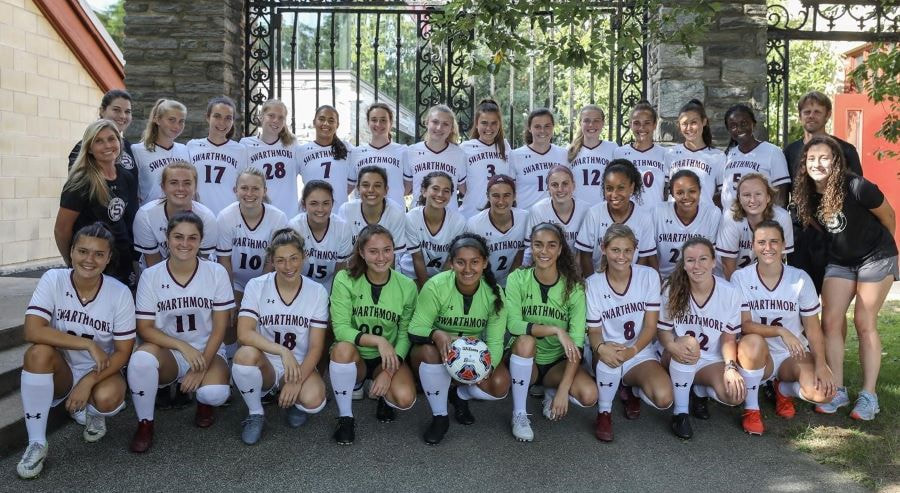|
Some colleges have their priorities straight during this time of Covid-19.
Four schools I already admired – Bowdoin, Morehouse, Sarah Lawrence and Swarthmore -- showed their values in recent days by cancelling all or part of their autumn athletic programs, so they could concentrate on education. Imagine. These schools do not exist to present extravaganza football games every Saturday during the fall semester, for the benefit of boosters and TV networks, to churn up money to keep the whole monstrosity going. However: each decision to cancel caused terrible pain to the people who mattered the most – the student-athletes who will not get to compete this fall, practice with their teammates, perform in front of vociferous family members and loyal fans. You cannot red-shirt a virus-cancelled season, say “come back for a fifth year.” Plus, these student-athletes have futures, although the 2020 fall season will not be part of them. We take it personally in our family. Our grand-daughter, Lulu Wilson, is a loyal member of the Swarthmore women’s soccer team that reached the Division III tournament in her first two seasons. She played very little in her first year due to an eye condition following a concussion, but she played some in her sophomore year - - and every time I checked in on her she raved about her teammates and her coaches and the practices and the togetherness. In between, she pursues a pre-med program, having already spent compelling days in hospitals, gowned up, watching the routines and even the operations. She is all in. When Swarthmore cancelled all fall sports, I checked in on Lulu and asked how she felt about the decision. “Honestly, I think it is smart of Swat,” she texted, using the nickname for the school, “and I admire that they are trying to keep us safe and move our country towards an end. “I think it would be ignorant of them to let us play,” she added. “I look at these big schools going back full-force and I worry that these kids are going to cause outbreaks and keep the pandemic going for the country as a whole. "So I respect what they did,” she said, adding her opinion that “online learning is not the same as a true Swat experience.” Now she is in mourning for what will always be lost – an autumn of practices in the drizzle and gathering darkness, the bus rides around the Northeast, and the identifiable voices of parents who travel from around the country to cheer for Swat. (Intro to Div III: in 2018, after Swarthmore lost to Middlebury in the Round of 16 up in Vermont, on the long bus ride back to Philadelphia, many of the players started studying for final exams coming up, she told me then.) “These four years are really special for us to be together as a team so this time apart will be hard," Lulu said Thursday. "We will have to find ways to stick together and find the positives in this situation.” Swarthmore student-athletes are not alone. I had a premonition a few days ago when I read that Bowdoin had cancelled fall sports. My wife and I have fallen in love with the college in Brunswick, Maine, from visiting the area in recent years, and we always find time to visit the jewel of an art museum on the campus. I also admired the decision by Morehouse in Atlanta to cancel football this year. I have become a fan of Morehouse over the years because of alumni like Martin Luther King, Jr., Donn Clendenon of the 1969 Mets, my Brooklyn hero Spike Lee, and Terrance McKnight, knowledgeable host of a nightly show on WQXR-FM, the classical station in New York. And Sarah Lawrence, in Bronxville, just above New York, is where we were lucky enough to send our two daughters, who gained great educations and eclectic talented friends. The other day, SLC cancelled all autumn sports. All schools are wrestling with terrible choices in this time of the virus. There are no easy answers, but these four admirable schools examined their values and realized sports were expendable – nevertheless, leaving a gigantic loss for a young student who loves her sport, her team, and also her education. ### 7/3/2020 10:45:59 am
George-great topic. Thanks for sharing.
George Vecsey
7/5/2020 08:01:15 am
Alan, thanks for your input. It is so hard to play a sport in college and also study. Friend of mine, a star shortstop in college and a two-year minor leaguer with memories to last a lifetime, recalls his introduction to being a student athlete. The advisor to the athletes -- wonderful woman named Mary Villegas Condon, married to the football captain/Marine vet -- was a mentor to athletes. She escorted players to the library, said that after practice they would find a corner of the library, and study. That was fine, my friend said, except he would find a quiet corner and then, bam, his head would be on the table until closing time. Div III athletes are not turning pro -- they make their labs and tests. Vive la difference, GV
bruce
7/5/2020 01:41:08 am
george,
George Vecsey
7/5/2020 08:12:11 am
Bruce: I can't speak for any of them, but our grand-daughter sounded quite sad at losing a season of practices, games, bus rides, camaraderie. She'll see worse in med school and in her practice.
bruce
7/5/2020 08:41:01 am
george, Comments are closed.
|
Categories
All
|










